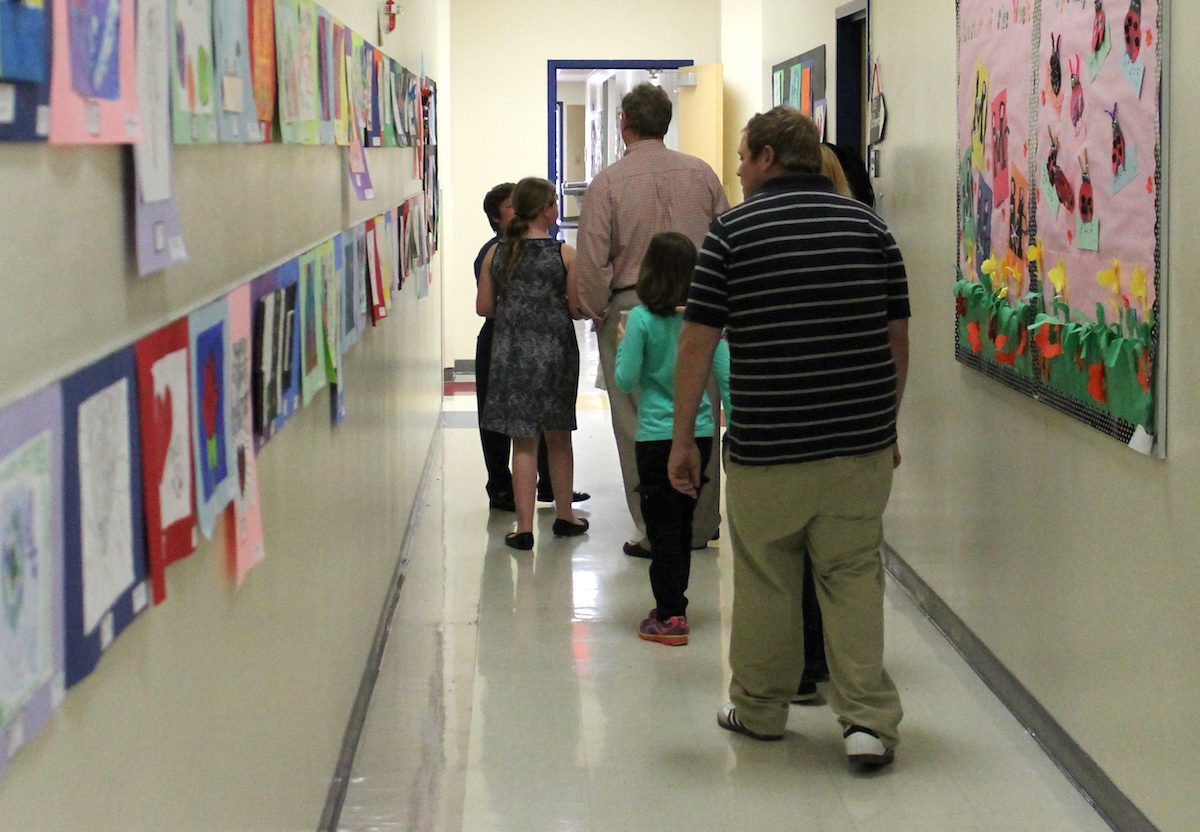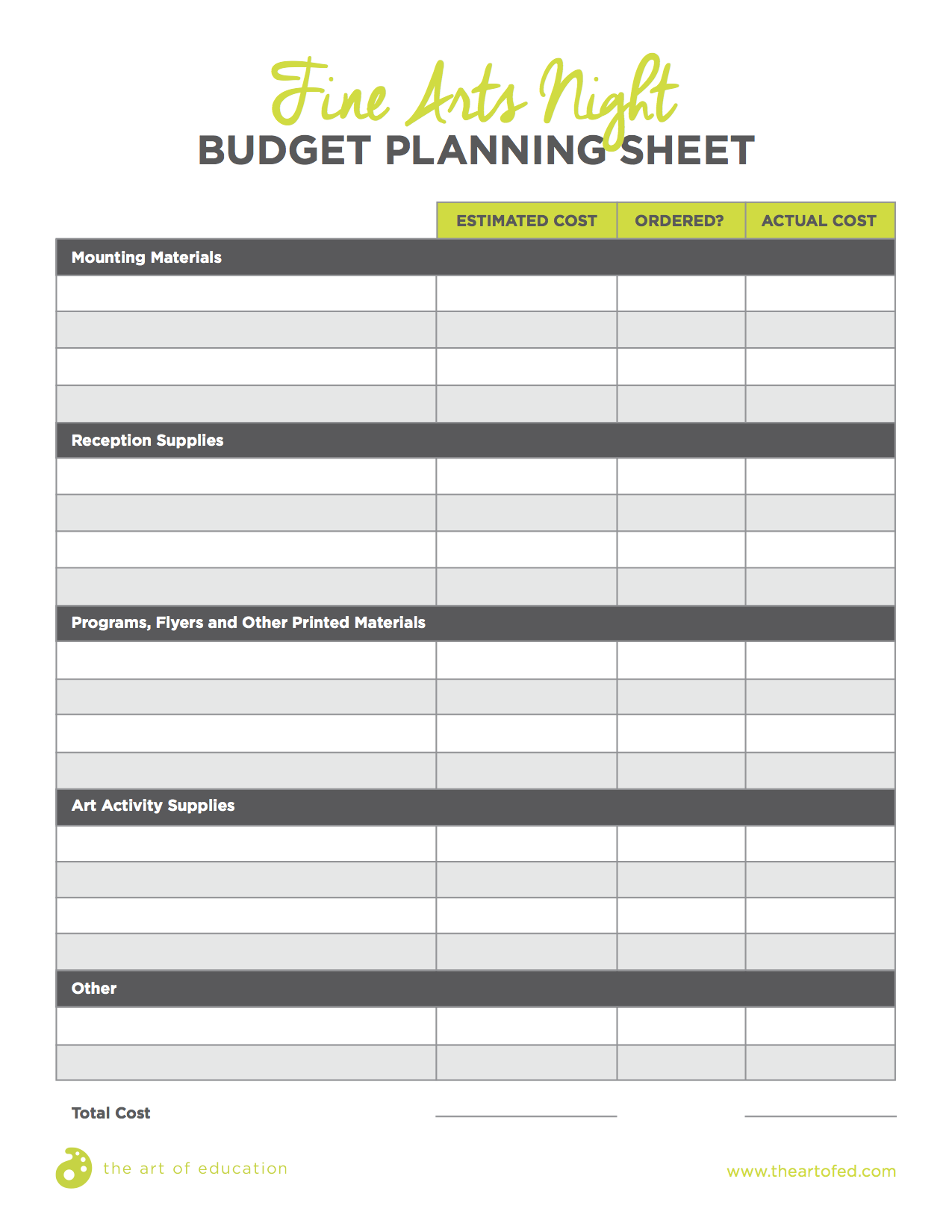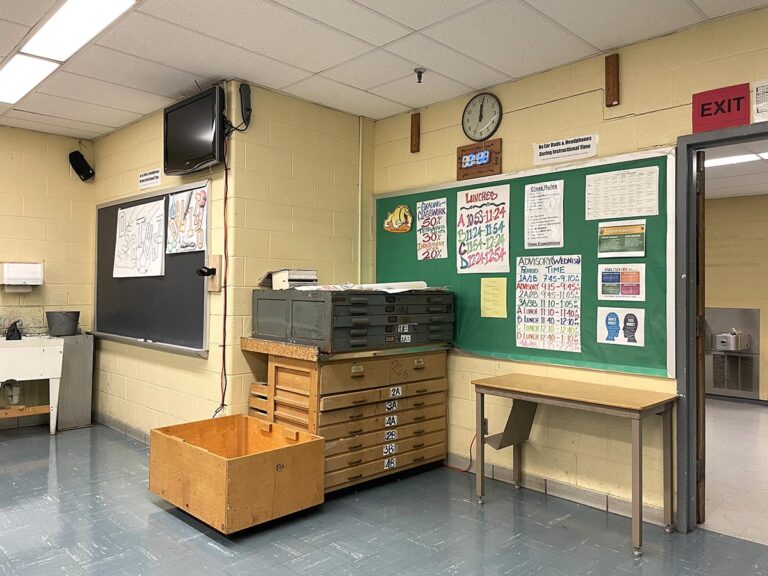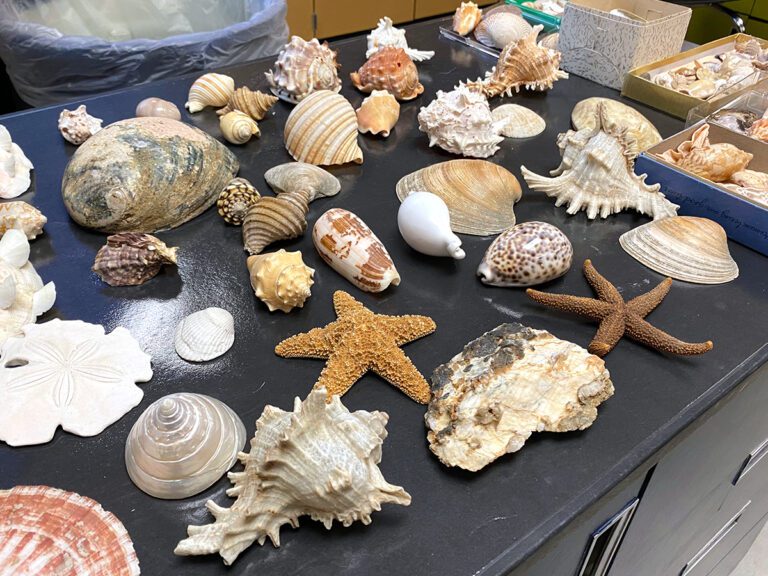Opportunities to have their work displayed can be life changing for our students. If you’ve ever felt the warm fuzzy feeling of seeing your art hung somewhere prominent, you know what I mean! Highlighting our students’ work should be at the forefront of our goals and an expectation for our art programs. It truly can make a difference in students’ confidence.
For the least seven years, the music teacher and I have hosted a Fine Arts Night at our elementary school. It’s grown into a fun family-friendly evening. Among other things, there are food trucks, art activities, live music, and a performance by the school choir.
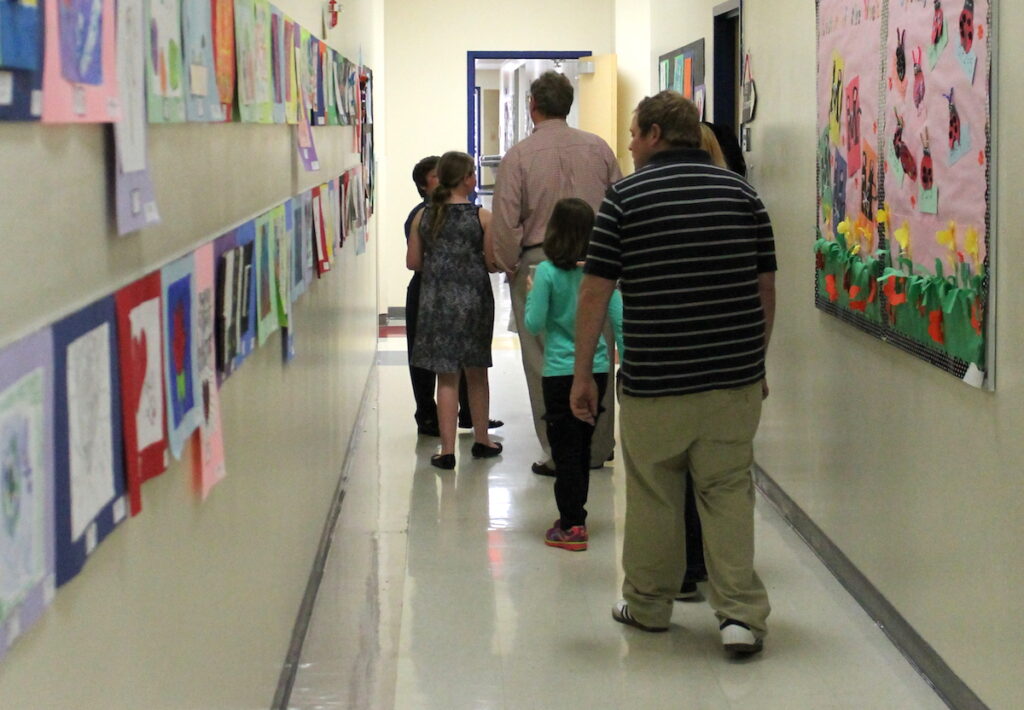
While planning a celebration of this kind may seem daunting, having a Fine Arts Night is manageable with proper planning. I recommend getting started six to seven months before your own event so everything is organized and comes together nicely. I’m excited to share some helpful tips and some detailed planning documents to guide you on your way to creating a celebration your students will never forget!
Here are 8 Steps for Organizing the Ultimate Fine Arts Night!
Download the helpful planning timeline below to keep yourself on track throughout the process!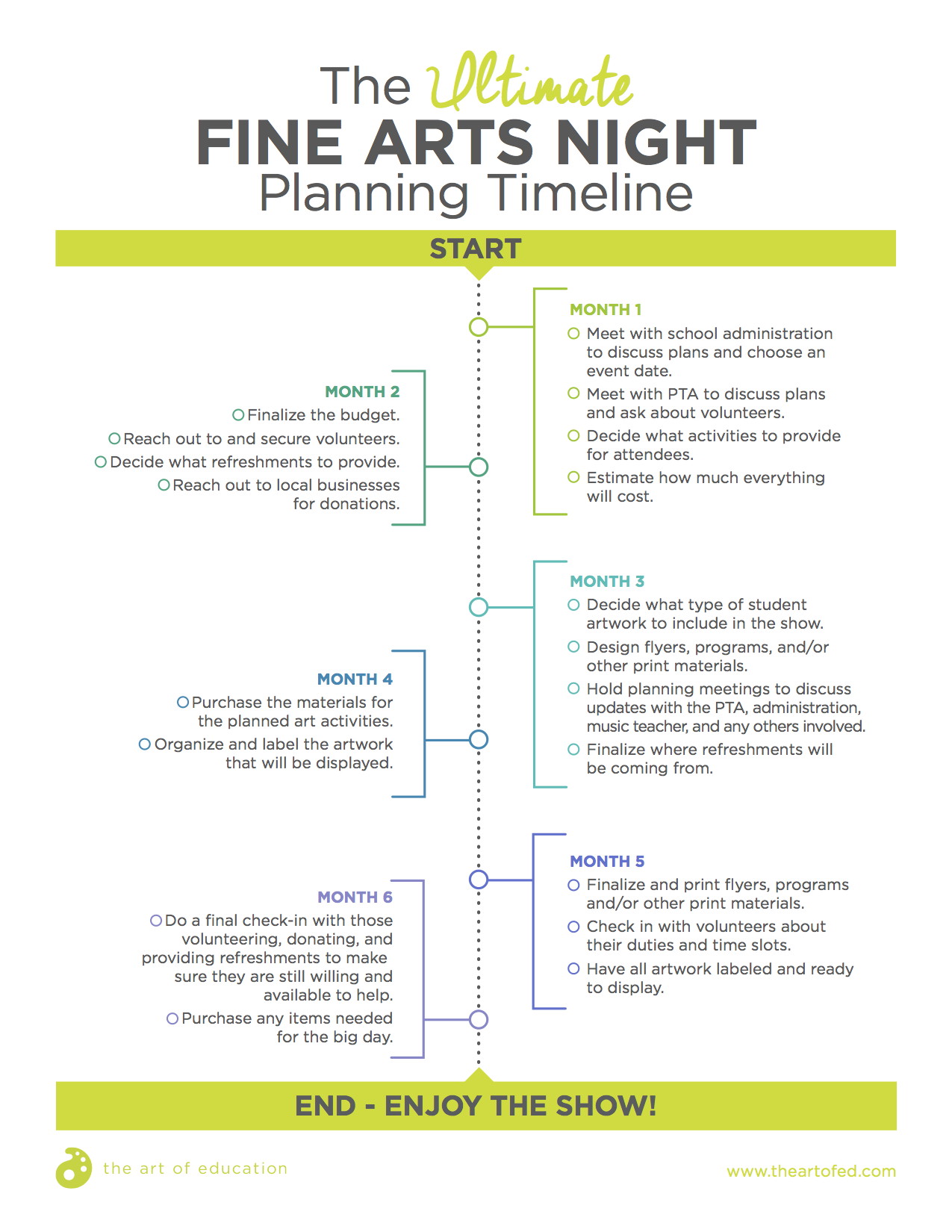
1. Set a Budget and Secure Funds
It is important to secure a budget before planning any special activities. All schools differ in how they handle these types of events. You may have access to fundraising funds or other special accounts, but you won’t know until you ask! Sit down with your administration to see what options you have.
In addition, you might want to meet directly with your PTA/PTO to see if they have extra funds or volunteers available. A PTA/PTO representative may even be willing to help coordinate the event!
Finally, check with local business to see how they can help. You may want to ask for monetary donations for treats, programs, and art supplies. Or, you can ask for those items directly.
You can use the sheet below to keep track of your materials. Total up your estimate to take to your admin meeting, check the box once your materials are ordered, and total up the final bill for your records!
2. Find Volunteers
An event like this is much easier with help. Even a few volunteers will make a difference as long as you are organized. Reach out to your school staff and PTA/PTO about six months in advance. For example, I plan with my PTA coordinator and music teacher in August because our Fine Arts Night is held in April.
Here are some jobs you may want help with:
- Creating labels (or use this handy trick!)
- Hanging the show
- Passing out flyers
- Greeting guests
- Supervising the art activities
- Managing the snack table
- Cleaning up
- Taking the show down
In order for parents to enjoy the event, I have teacher volunteers help with running the jobs during the actual event, and parents help with the preparation and setup. This way parents can go view their child’s work and create art with them at the stations.
Remember to write down your volunteer’s contact info so you can remind them about their duties as your event approaches as well as sending a thoughtful thank you after the night is a success!
3. Organize the Art
Once you have your budget and volunteers, you have a great foundation and can get started with how you plan to organize your students’ work. This is the time to consider whether you want to do all 2-Dimensional work, 3-Dimensional work, or a mix of both.
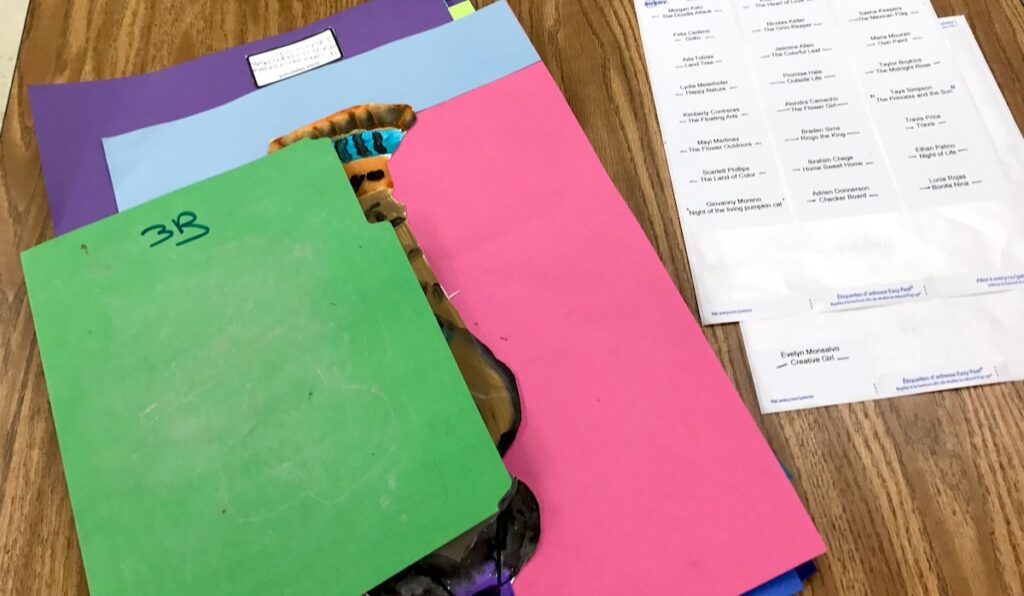
Storage is a valid concern with these types of events, so planning is imperative. I typically begin pulling work two to three months in advance. Consider letting your students make the final choice about what they want to show so they are engaged and invested.
4. Plan Family-Friendly Activities
Having a fun, memorable event is important. Give your families some hands-on activities to do after they take in all the beautiful art. These activities could be spread throughout your school or localized in one large space like a multipurpose room or cafeteria.
Here are a few ideas:
- Set up a reception table with punch and cookies.
- Make a photo booth area with props.
- Call your local food trucks to set up shop outside the school.
- Provide simple art activities such as creating artist trading cards, designing bookmarks, or working on a giant collaborative doodle.
Last year, I even added a creative construction challenge. I put out marshmallows and toothpicks with the prompt, “Design a structure for Marshmallow City.” I had a large sheet of green butcher paper with pre-drawn roads, green space, and a few blue pieces of construction paper that looked like lakes. It was amazing to see what everyone created.
Be sure to plan your activities during the budget phase and buy your materials in advance. That way, you won’t have to think about them while you’re busy organizing art during last few months.
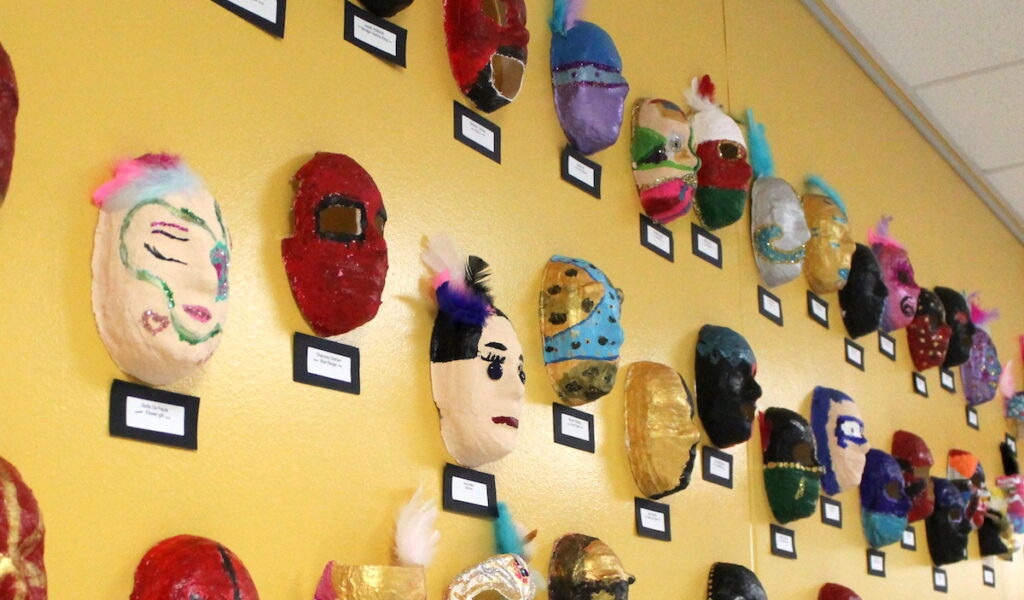
5. Incorporate Music
Of course, the musical performances can be handled by the music teacher. However, it’s nice to be on the same page. Be sure to meet early in the process to plan how everything will work together. What has worked for our Fine Arts Night is to schedule the musical performance an hour after the event begins. So, if the event goes from six o’clock to eight o’clock, the performance would be at seven o’clock. A performance lasting 15-20 minutes generally works best. This way everyone has a chance to view the art and participate in the activities.
The music teacher can also reach out to a local high school music ensembles to find a quartet or other group to play music in the halls during the event to add to the ambiance.
6. Design Event Programs
With so much going on, it’s helpful to give your attendees a program of some sort. Be sure to include a map and written details about where to find each grade level’s artwork. In addition, include the time and location of the concert as well as details about where to find food. Including a statement about the importance of the arts is also a nice touch. You can use a simple word processing document like Pages or Word or get a little fancier with something like Canva.
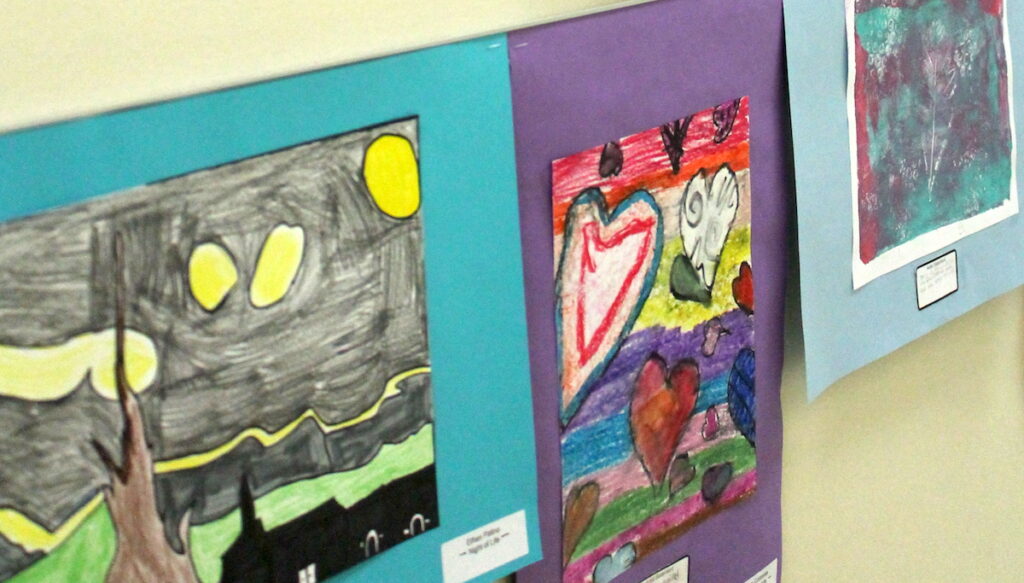
7. Publicize the Event
It is important to send info home about the event at least two months in advance so your school community can save the date. If your budget allows, design an attractive flyer to print and send home with students. Again, Pages, Word, or something like Canva will work well. If you’re looking for a cost-saving measure, see if you can get four flyers printed to one sheet and cut them apart. You’ll also want to print a few larger flyers to post around your school in common areas, near water fountains, and in classrooms.
In addition, adapt your flyer information so it can be shared in school newsletters and grade level newsletters, on the school website, and social media posts. If you have your own blog or social media site for the art room, be sure to share it there, too!
8. Be Adaptable!
Of course, all schools are different, so you may need to change some of these ideas to fit your location or population. For example, I work with 500 students, but I know many elementary art teachers have more. If displaying everyone’s work seems overwhelming, consider choosing just one grade level to highlight. If you choose the same grade level each year, all students will have a chance to have their work displayed.
If your budget is tight, you could have students write their names with Sharpies instead of providing fancy labels, forego printed flyers and stick with social media to promote your event or provide just one simple art activity.
If you’re short on volunteers, you can have older students become docents, greet people with a sign instead of a person, and use large signage instead of printed programs to direct people the night of the event.
No matter how you decide to plan your Fine Arts Night, your students will appreciate the chance to show off their work. Be sure to download the timeline to keep yourself on track. With an event this big, organization is key!
If you’re looking for even more great tips about displaying art, check out Secrets to Running a Successful Elementary Art Show!
Do you have a school-wide event that showcases your students’ work?
What do you do to plan ahead for student exhibits?
Magazine articles and podcasts are opinions of professional education contributors and do not necessarily represent the position of the Art of Education University (AOEU) or its academic offerings. Contributors use terms in the way they are most often talked about in the scope of their educational experiences.
